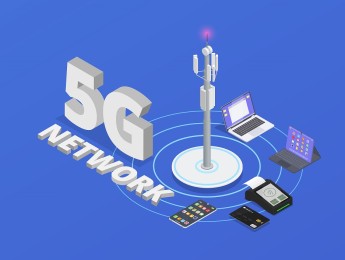Technology is constantly evolving in all fields, but particularly in networking. Since the early 90s, GSM and later GPRS have been widely used as the standard of networking services. While newer networks have overtaken their use in recent years, many of their original protocol stacks and initial functions are still used in an evolved form. For someone within the engineering industry, comprehension of the fundamentals of GSM and GPRS is still essential.
Global System for Mobile (GSM) was created as a low-data network intended to deliver voice services and data from device to device. It excelled at this and had many benefits compared to other established networks. GSM was used throughout the second generation of network technology, though as the demand for mobile devices grew, it struggled to match.
General Packet Radio Services (GPRS) eventually emerged with an improved data transfer method. GSM merged with GPRS to create an advanced cellular network. Using GSM's original functions, GPRS adapted many different protocols, including the packet-switching protocol, to expand the network's capabilities. These systems co-exist, allowing for effective data transfer alongside voice calls and text messages.
Upon completion of this course, participants will be able to:
- Review the history of the GPRS system.
- Assess the transition from GSM to GPRS.
- Analyse the architecture of GPRS and GSM systems.
- Comprehend the existing and emerging standards for mobile networks.
- Identify key components apart of GSM and GPRS.
- Understand the services GPRS provides and its limitations.
- Explain the advantages and disadvantages of GSM and GPRS.
- Recognise different IP network architectures and functionality.
- Identify GSM and GPRS principles and protocols.
- Implement and maintain GPRS security.
This course is designed for anyone interested in developing themselves as a technical manager or expert in communications software. It would be most beneficial for:
- System Analysts
- Software and System Engineers
- Technical Managers
- Communication Specialists
- Electrical Engineering Managers
- Control and Instrumentation Engineers
- IT Professionals
- Data Analysts
This course uses a variety of adult learning styles to aid full understanding and comprehension. Participants will investigate established GSM and GPRS networks to highlight key features and components.
Participants will be supplied with all the necessary equipment to conduct the learning exercises. They will also be offered the opportunity to plan their own GPRS network, combining the practical skills and knowledge taught throughout the course. Through presentations, group discussions, and practical demonstrations, they will develop a full and comprehensive understanding of GSM and GPRS systems.
Day 5 of each course is reserved for a Q&A session, which may occur off-site. For 10-day courses, this also applies to day 10
Section 1: Introduction to GSM and GPRS
- Defining GSM and GPRS.
- Identifying key features of both systems.
- The role GSM originally had.
- Evolving from GSM to GPRS systems as a standard.
- Methods of data transfer utilised by GSM.
- How GSM and GPRS systems were originally merged together.
- Nodes and interfaces associated with GPRS.
Section 2: GPRS Interface
- The types of coding channels for error detection and correction.
- TDMA framework and multiframes.
- How timeslots and corresponding frequencies are allocated.
- Assessing GSM and GPRS frequency bands and their specific characteristics.
- Analysing the different interfaces within GPRS.
- Balancing interface levels with signal levels.
Section 3: Protocol Stacks
- Understanding the purpose of protocol stacks.
- Identifying the three layers of GPRS protocol stack - MS , BSS, SGSN and GGSN.
- The roles of the three layers.
- The protocol stack process from start to end.
- Differences between IP-based and MTP-based protocol stacks.
- GPRS Tunnelling Protocol (GTP) to aid users in maintaining a connection for internet access.
Section 4: GPRS Management
- What factors ensure effective GPRS management and operation?
- Utilising mobility management to manage users connected to the network.
- Efficiently troubleshooting to discover faults before they impact network function.
- Defining EDGE.
- Integrating EDGE with GPRS to create EGPRS.
- Types of EDGE modulation-coding schemes.
- Link adaptation and incremental redundancy.
Section 5: Network Planning and Traffic Management
- Tools and procedures required for GPRS engineering.
- Methods of planning a GPRS system.
- IP address allocation and tunnelling protocol.
- Establishing data transfer to and from wanted devices.
- Managing traffic within the network post-implementation.
- How quality of service is measured, recorded and used to improve further.
- Understanding and monitoring the attach and detach process.
Upon successful completion of this training course, delegates will be awarded a Holistique Training Certificate of Completion. For those who attend and complete the online training course, a Holistique Training e-Certificate will be provided.
Holistique Training Certificates are accredited by the British Assessment Council (BAC) and The CPD Certification Service (CPD), and are certified under ISO 9001, ISO 21001, and ISO 29993 standards.
CPD credits for this course are granted by our Certificates and will be reflected on the Holistique Training Certificate of Completion. In accordance with the standards of The CPD Certification Service, one CPD credit is awarded per hour of course attendance. A maximum of 50 CPD credits can be claimed for any single course we currently offer.
- Course Code IND07-102
- Course Format Online, Classroom,
- Duration 5 days













